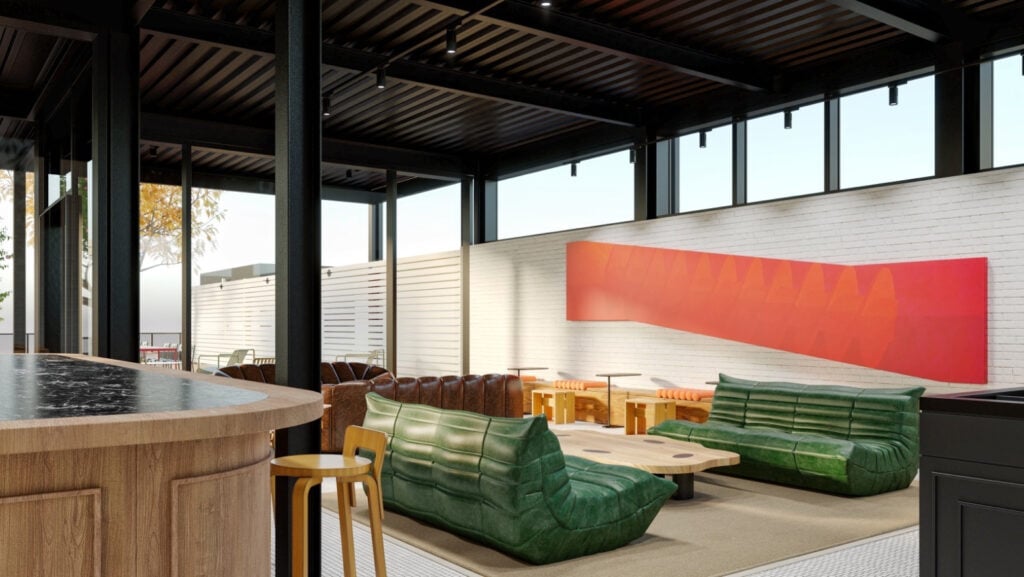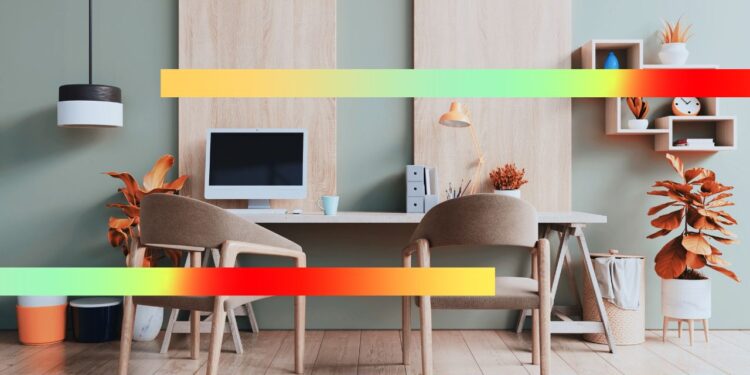- With more and more professionals joining the coworking community, it’s important to have a space that is well-designed and fosters effective collaboration.
- When designing the layout, make sure there are enough designated areas for group work and brainstorming sessions; collaboration should be encouraged, so the right spaces should be provided for it.
- Make sure to offer a variety of workspaces that cater to different needs and preferences; mix it up with standing desks, cozy corners, and other options to accommodate everyone’s work style.
Collaboration is the key to innovation and creativity, which makes coworking spaces so special. With more and more professionals joining the coworking community, it’s important to have a space that is well-designed and fosters effective collaboration. A great coworking space can inspire connections, boost productivity, and create community.
There are many ways in which to design a space that promotes collaboration, as well as tips on what to avoid. By understanding the principles of coworking space design, we can create environments that bring out the best in people and inspire true collaboration.
Let’s get started!
Key Elements of Successful Coworking Space Layout
- Open and flexible floor plans: Think spacious and uncluttered layouts that allow people to move around freely. No need for too many walls or barriers; keep it open and inviting.
- Smart use of space: Make the most of the available area by considering what members need. Focus on practical workspaces, spots for group activities, and areas where people can relax and chat. Let’s save valuable space!
- Different zones for different needs: Create special areas for focused work, collaboration, and socializing. It’s helpful to give people options like quiet corners for concentration, meeting rooms for brainstorming, and cozy spots to unwind and mingle.
- Comfy furniture that’s easy on the body: It’s important to provide chairs and desks that support good posture and can be adjusted for comfort. Make sure people can work comfortably and stay productive.
- Lots of natural light and good lighting: Bring in as much natural light as possible to make the space bright and inviting. And let’s remember proper lighting for when the sun goes down. It’s important for everyone to have the right ambiance and to be able to see what they’re doing.
Avoiding Common Layout Mistakes
- Privacy and noise control: Remember to provide areas where people can have some quiet and focus. Avoid making everything too open and noisy; strike a balance between collaboration and the need for some peace and quiet.
- Workspace diversity: Make sure to offer a variety of workspaces that cater to different needs and preferences. Don’t just stick to one type of desk or workstation; mix it up with standing desks, cozy corners, and other options to accommodate everyone’s work style.
- Communal areas and collaboration zones: Don’t skimp on communal spaces where people can come together and collaborate. Make sure there are enough designated areas for group work and brainstorming sessions. Collaboration should be encouraged, so the right spaces should be provided for it.
- Smooth traffic flow: Keep the flow of movement in mind when designing the layout. Avoid cramped or congested areas that make it hard for people to navigate to ensure a smooth and easy flow throughout the space.
- Technology integration: Pay attention to integrating technology seamlessly into the layout. Ensure there are enough power outlets, charging stations, and easy access to Wi-Fi.
Design Considerations for Collaboration
- Strategic placement of communal areas and amenities: Put communal areas, such as coffee stations or lounge areas, in central locations to encourage spontaneous interactions and collaboration. Ensure amenities like printers and whiteboards are easily accessible to support collaborative work.
- Incorporating natural elements and biophilic design: Bring in elements of nature, like plants or natural materials, to create a calming and inspiring environment. Biophilic design can help boost creativity and collaboration among members.
- Enhancing visual appeal and aesthetics: Consider the overall aesthetics of the space to create a visually appealing environment. Use colors, artwork, and attractive design elements to make the space inviting and conducive to collaboration.
- Creating a sense of community and belonging: Design features that foster a sense of community, such as a community bulletin board or a shared wall for members to showcase their work. Encourage collaboration and connections by incorporating spaces that promote interaction and conversation.
Addressing Specific Needs and Challenges
- Design considerations for remote workers and digital nomads: Provide dedicated spaces or designated areas with amenities specifically tailored to meet the needs of remote workers. Consider comfortable workstations, reliable Wi-Fi, and quiet areas for virtual meetings.
- Balancing individual workspaces and team collaboration areas: Strike a balance between private workspaces and areas designed for team collaboration. Offer a mix of options, such as private offices, shared workstations, and meeting rooms, to cater to different work styles and project requirements.
- Accessibility and inclusivity in design: Ensure the space is accessible to individuals with diverse abilities. Consider features like wheelchair accessibility, adjustable desks, and assistive technology. Create an inclusive environment that welcomes people of all backgrounds and abilities.
Case Studies: Successful Coworking Space Designs
1. The Working Capitol, Singapore: The Working Capitol in Singapore is a vibrant coworking space that fosters entrepreneurial activity. With 24-hour access to hot-desking areas, meeting rooms, event spaces, and office services, it provides a hub for individuals at the intersection of creativity, technology, and business. Housed in a beautifully renovated colonial-era building spanning 33,000 square feet, it offers purpose-built workspaces and a beer garden, creating an attractive environment for creatives in Singapore.

2. Zoku, Amsterdam: Zoku is a culturally-minded hotel in Amsterdam that caters to dedicated digital nomads. It features 133 lofts with fully-equipped kitchens, clever storage spaces, and elevated loft-style sleeping areas. Residents can stay for as short as five nights or several months and have access to 500 square meters of social space. Zoku offers coworking surroundings, a residential living kitchen, and a place where nomads can feel grounded, connected, and inspired during their time in Amsterdam.

3. East Room, Toronto: East Room is a coworking club in Toronto that caters to a dynamic community of creatives aged 25 to 45. With a focus on work-play balance, it provides an artist studio-like space where individuals working in various creative realms can come together. From art direction to branding, photography to film, graphic design to fashion, East Room offers a handsome backdrop for collaboration and hosts monthly events and performances. Its industrial warehouse aesthetics and location in an emerging area make it an ideal match for the raw creativity of its coworking collective.

Best Practices for Designing a Collaborative Coworking Space
To design a coworking space that fosters collaboration, follow these key best practices:
- Be flexible: Design with adaptability in mind to accommodate different work styles and changing needs.
- Prioritize communal areas: Create ample space for interaction, collaboration, and networking among members.
- Balance privacy and openness: Provide private workspaces for focused tasks and open areas for collaboration.
- Embrace nature: Integrate plants and natural light to create a calming and inspiring atmosphere.
- Focus on comfort: Invest in ergonomic furniture and amenities for the well-being and productivity of members.
- Seamless technology integration: Ensure easy access to reliable Wi-Fi and charging stations throughout the space.
- Foster belonging: Design a welcoming environment that celebrates diversity and allows personalization.
Remember, collaboration is key in coworking. By incorporating these practices, you’ll create a coworking space where connections flourish and productivity soars. Happy designing!


 Dr. Gleb Tsipursky – The Office Whisperer
Dr. Gleb Tsipursky – The Office Whisperer Nirit Cohen – WorkFutures
Nirit Cohen – WorkFutures Angela Howard – Culture Expert
Angela Howard – Culture Expert Drew Jones – Design & Innovation
Drew Jones – Design & Innovation Jonathan Price – CRE & Flex Expert
Jonathan Price – CRE & Flex Expert












